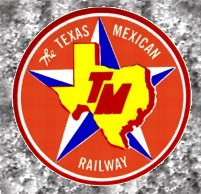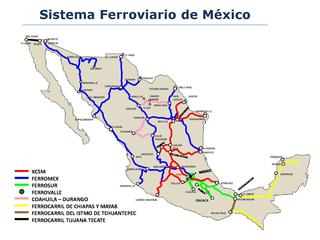
Albuquerque, abbreviated ABQ, is the most populous city in the U.S. state of New Mexico. Its nicknames, The Duke City and Burque, both reference its founding in 1706 as La Villa de Alburquerque by Nuevo México governor Francisco Cuervo y Valdés. Named in honor of the Viceroy of New Spain, the 10th Duke of Alburquerque, the city was an outpost on El Camino Real linking Mexico City to the northernmost territories of New Spain. In 2006 the city celebrated its 300th anniversary.

Mexico City International Airport ; officially Aeropuerto Internacional Benito Juárez is the main international airport serving Greater Mexico City, along with Toluca International Airport and, since 2022, Felipe Ángeles International Airport ("AIFA"). It is Mexico's and Latin America's busiest airport by passenger traffic and aircraft movements, and the 16th busiest in the world. The airport sustains 35,000 jobs directly and around 15,000 indirectly in the immediate area. The airport is owned by Grupo Aeroportuario de la Ciudad de México and operated by Aeropuertos y Servicios Auxiliares, the government-owned corporation, which also operates 22 other airports throughout Mexico.

The Kansas City Southern Railway Company was an American Class I railroad. Founded in 1887, it operated in 10 Midwestern and Southeastern U.S. states: Illinois, Missouri, Kansas, Oklahoma, Arkansas, Tennessee, Alabama, Mississippi, Louisiana and Texas. KCS had the shortest north-south rail route between Kansas City, Missouri, and several key ports along the Gulf of Mexico.

The Territory of New Mexico was an organized incorporated territory of the United States from September 9, 1850, until January 6, 1912. It was created from the U.S. provisional government of New Mexico, as a result of Nuevo México becoming part of the American frontier after the Treaty of Guadalupe Hidalgo. It existed with varying boundaries until the territory was admitted to the Union as the U.S. state of New Mexico. This jurisdiction was an organized, incorporated territory of the US for nearly 62 years, the longest period of any territory in the contiguous United States.

The Mexican Cession is the region in the modern-day southwestern United States that Mexico originally controlled, then ceded to the United States in the Treaty of Guadalupe Hidalgo in 1848 after the Mexican–American War. This region had not been part of the areas east of the Rio Grande that had been claimed by the Republic of Texas, though the Texas annexation resolution two years earlier had not specified the southern and western boundary of the new state of Texas. At roughly 529,000 square miles (1,370,000 km2), the Mexican Cession was the third-largest acquisition of territory in U.S. history, surpassed only by the 827,000-square-mile (2,140,000 km2) Louisiana Purchase and the 586,000-square-mile (1,520,000 km2) Alaska Purchase.

The Mountain Time Zone of North America keeps time by subtracting seven hours from Coordinated Universal Time (UTC) when standard time (UTC−07:00) is in effect, and by subtracting six hours during daylight saving time (UTC−06:00). The clock time in this zone is based on the mean solar time at the 105th meridian west of the Greenwich Observatory. In the United States, the exact specification for the location of time zones and the dividing lines between zones is set forth in the Code of Federal Regulations at 49 CFR 71.

The Second Mexican Empire, officially the Mexican Empire, was a constitutional monarchy established in Mexico by Mexican monarchists in conjunction with the Second French Empire. The period is sometimes referred to as the Second French intervention in Mexico. Emperor Napoleon III of France, with the support of the Mexican conservatives, clergy, and nobility, established a monarchist ally in the Americas intended as a restraint upon the growing power of the United States. It has been viewed as both an independent Mexican monarchy and as a client state of France. Invited to become emperor of Mexico by Mexican monarchists who had lost a bloody civil war against Mexican liberals was Austrian Archduke Maximilian, of the House of Habsburg-Lorraine, who had ancestral links to rulers of colonial Mexico. His wife and empress consort of Mexico was the Belgian princess Charlotte of the House of Saxe-Coburg and Gotha, known in Mexico as "Carlota".

The Mexico City Metro is a rapid transit system that serves the metropolitan area of Mexico City, including some municipalities in Mexico State. Operated by the Sistema de Transporte Colectivo (STC), it is the second largest metro system in North America after the New York City Subway. In 2019, the system served 1.655 billion passengers, the tenth highest ridership in the world.

Hidalgo is a station on Line 2 and Line 3 of the Mexico City Metro system. It is located in the Cuauhtémoc borough of Mexico City, west of the city center, on Hidalgo Avenue and serves the Colonia Tabacalera, Colonia Guerrero, and Colonia Centro districts.

Chabacano metro station is a Mexico City Metro transfer station in the Cuauhtémoc borough of Mexico City. It is served by Lines 2, 8 and 9. It is a combined underground and at-grade station whose platforms are distributed into two side platforms and one island platform—the Spanish solution layout.

The Texas Mexican Railway was a railroad that operated as a subsidiary of the Kansas City Southern Railway in Texas. It is often referred to as the Tex-Mex, or TexMex Railway.

Mexico, officially the United Mexican States, is a country in the southern portion of North America. It is bordered to the north by the United States; to the south and west by the Pacific Ocean; to the southeast by Guatemala, Belize, and the Caribbean Sea; and to the east by the Gulf of Mexico. Mexico covers 1,972,550 km2, making it the world's 13th-largest country by area; with a population of over 126 million, it is the 10th-most-populous country and has the most Spanish speakers. Mexico is organized as a federal republic comprising 31 states and Mexico City, its capital. Other major urban areas include Monterrey, Guadalajara, Puebla, Toluca, Tijuana, Ciudad Juárez, and León.

Mexico has a freight railway system owned by the national government and operated by various entities under concessions (charters) granted by the national government. The railway system provides freight and passenger service throughout the country, connecting major industrial centers with ports and with rail connections at the United States border. Passenger rail services were limited to a number of tourist trains between 1997, when Ferrocarriles Nacionales de México suspended service, and 2008, when Ferrocarril Suburbano de la Zona Metropolitana de México inaugurated Mexico's first commuter rail service between Mexico City and the State of Mexico. This is not including the Mexico City Metro, which started service in 1969.

Line 2 is one of the 12 lines of the Mexico City Metro.

Mexico City Metro Line 3 is one of the 12 metro lines built in Mexico City, Mexico.

Mexico City Metro Line 6 is one of the twelve metro lines operating in Mexico City, Mexico. Its distinctive color is red. It was the sixth line to be opened.

Mexico City Metro Line 9 is one of the 12 metro lines built in Mexico City, Mexico.

Mexico City Metro Line A is one of the twelve metro lines operating in Mexico City, Mexico. The line's color is purple. It was the ninth line to be opened.

Mexico City Metro Line B is one of the twelve metro lines operating in Mexico City, Mexico. It has 21 stations and a total length of 23.772 km (14.771 mi), 20.278 km (12.600 mi) service the line while the rest are used for maneuvers.

Ecatepec, officially Ecatepec de Morelos, is a municipality in the central Mexican state of Mexico, and is situated in the north part of the greater Mexico City urban area. The municipal seat is San Cristóbal Ecatepec.



















